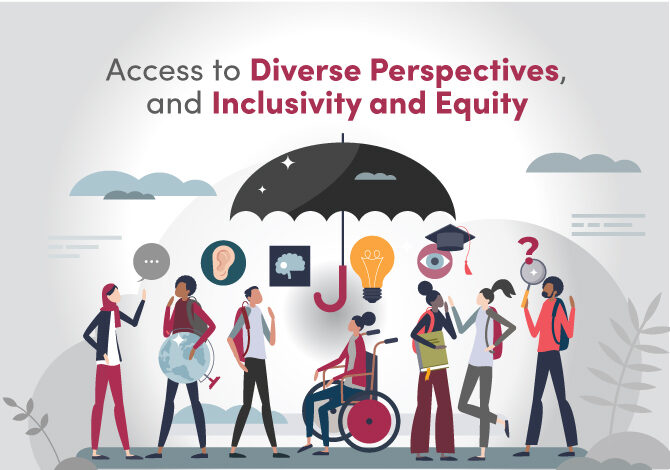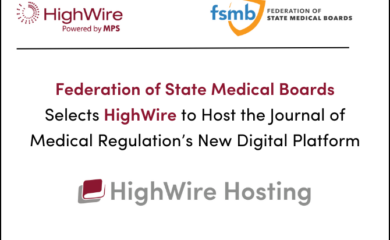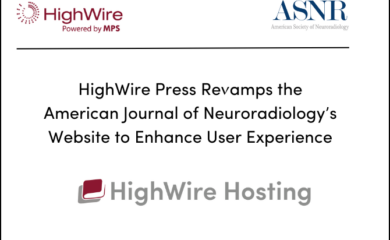Promoting bibliodiversity is seen as a way to increase access to knowledge, reduce barriers to information, and foster a more collaborative and open scholarly community. Tony Alves, SVP of Product Management at HighWire, attended the NISO Plus conference in Baltimore, where he moderated a session on “Open Scholarship and Bibliodiversity” featuring six presenters from different parts of the world, all working on various open scholarship initiatives that support the principles of bibliodiversity.
Following is the first of a two-part blog post summarizing that session. This covers the first two principles, Access to Diverse Perspectives, and Inclusivity and Equity.
Open Scholarship and Bibliodiversity
“Bibliodiversity” as it pertains to open scholarship refers to the diversity of publishing models, platforms, and formats available for scholarly communication. It emphasizes the importance of a varied and inclusive ecosystem for acquiring academic knowledge and disseminating research. An important part of bibliodiversity is the inclusion and promotion of diverse of scholarly voices. In February I moderated a session at the NISO Plus conference, called “Open Scholarship and Bibliodiversity”, that included researchers and scholarly communication professionals from diverse backgrounds, representing varied open scholarship initiatives. Each of the panelists were asked to consider these key principles as they prepared their talks.
- Access to Diverse Perspectives
- Inclusivity and Equity
- Reducing Publishing Bias
- Encouraging Innovations
- Global Collaboration
While each presentation contained elements of each principle, I have related each presentation to the principle that they most represented.
Access to Diverse Perspectives
Bibliodiversity, which encompasses a diverse range of publishing models and platforms, allows for a broader representation of scholarly voices. Different publishing options, including open access journals, institutional repositories, and alternative publishing platforms, can cater to a variety of perspectives, research topics, and methodologies.
Maureen P. Walsh, Scholarly Sharing Strategist, Associate Professor at The Ohio State University, presented, “Investments in Open Scholarship toward Bibliodiversity: The Role of a Large North American Research Library”. Her talk focused on transforming the scholarly publishing economy, particularly within a large North American research library, aiming to promote bibliodiversity through investments in open scholarship. Walsh emphasized that the initiative, ongoing since April 2019, represents a strategic approach and is guided by values and principles such as open access publishing agreements, consortia partnerships, open scholarly infrastructure, authors’ rights, open access monographs, engagement with campus partners, and support for diamond open access.
Walsh Highlighted one significant aspect of the initiative which involves investments in open scholarship, encompassing various models, platforms, and formats. For instance, the “Read and Publish” or “Pure Publish” model, implemented from July 8, 2020, to February 9, 2024, resulted in the publication of 1,471 articles as open access, with $4,604,805 in article processing charges (APCs) waived. She noted that the investments target scholarly societies, non-profit organizations, university presses, and commercial publishers, supporting their transition towards open access publishing. Examples of supported entities include the Biochemical Society, Cambridge University Press, PLOS, and Springer.
This initiative, as discussed by Walsh, highlights investments made by university libraries in diamond open access, subscribe-to-open models, open monographs, and open infrastructure, demonstrating a commitment to promoting diverse scholarly outputs and supporting campus researchers. It represents a balancing act between fostering bibliodiversity—ensuring a diverse range of scholarly works—and supporting the needs and goals of the academic community.
The support provided through this initiative extends beyond financial investments, aiming to have a tangible impact on the direction and scale of open scholarship. Wash sees that collaborating with various stakeholders and investing strategically in open access initiatives, the large North American research library can contribute to the advancement of scholarly communication while ensuring equitable access to knowledge resources for researchers and scholars.
Inclusivity and Equity
A diverse scholarly ecosystem promotes inclusivity and equity by providing opportunities for researchers from different backgrounds, disciplines, and regions to share their work. Open scholarship aims to break down barriers to information access, and a diverse bibliodiversity contributes to this goal by offering a platform for a wide array of voices.
Two presentations fall under this category. First, Nataliia Kaliuzhna, Research Associate at TIB – Leibniz Information Centre for Science and Technology, and PhD student at Kyiv National University of Culture and Arts, presented “Identification of hurdles to open access publishing for researchers with weak institutional ties — epistemic injustice in scientific publishing”. She provided an overview about the newly launched IDAHO project, which aims to identify and describe the obstacles and their underlying mechanisms that researchers with weak institutional ties face in the realm of open access publishing. It underscores the necessity of ensuring that diverse ranges of voices from various backgrounds have an equitable opportunity to engage in research, knowledge creation and dissemination. The project spans from October 2023 to August 2025 and employs a multi-part exploratory mixed-method approach.
Kaliuzhna explained that the initial phase, a comprehensive literature review, has been conducted, revealing a range of obstacles authors encounter when attempting to publish open access. This stage of the study aims to inform the data collection approach for the subsequent empirical phase. These include independent researchers, those without affiliations, transient academics, retired researchers, refugee scientists, NGO researchers, and individuals from the Citizen Science domain. As Kaliuzhna points out, the study aims to shed light on the specific obstacles faced by these diverse groups, particularly due to their lack of sufficient institutional support (APC funding).
Currently, the project is progressing to its second phase, which involves qualitative interviews with both researchers and publishers, alongside quantitative surveys targeting researchers. Kaliuzhna says that this phase seeks to deepen the understanding gained from the literature review by directly engaging with stakeholders. Subsequently, in the third phase, a workshop with publishers will be organized to distill findings into actionable recommendations for improving access to open publishing for researchers with weak institutional ties.
By addressing these barriers and proposing practical measures to overcome or mitigate them, the study endeavors to promote inclusivity and equity in scientific publishing, ensuring that valuable contributions from researchers across various backgrounds are not marginalized due to institutional affiliations or lack thereof.
Michael Chimalizeni, Metadata Specialist and Consultant located in Zimbabwe, presented “Bibliodiversity – Local Action to Stay on the Cutting Edge”. Chimalizeni emphasized the critical importance of assistive technology, citing a 2017 study in the Lancet that showed 90% of visually impaired individuals reside in developing countries and face significant barriers to education and employment opportunities. There is a need for local libraries to balance technological advancements with ensuring accessibility to content, especially for marginalized communities. To address this disparity, Chimalizeni outlined a series of proactive measures to promote and advocate for assistive technology within local library services.
One significant initiative is the organization of webinars aimed at library directors to raise awareness about the importance of accessibility and assistive technology in library services. The webinars highlight specific case studies demonstrating the transformative impact of implementing assistive technology in libraries, such as how the adoption of screen reader software improved accessibility for visually impaired patrons in a particular library. Also explored were strategies to enhance accessibility within limited budgets, such as advocating for increased funding allocations for assistive technology, seeking grants specifically earmarked for accessibility initiatives, or exploring partnerships with local organizations or businesses willing to sponsor accessibility upgrades in libraries.
Chimalizeni discussed the establishment of a community of practice group on WhatsApp, a space for library professionals to collaborate, share insights, and brainstorm innovative approaches to enhancing accessibility in library services. Members of this group can exchange best practices on creating accessible digital resources and discuss implementing inclusive design principles in library programming.
Partnering with publishers to improve the accessibility of their content, libraries and the publishing industry can also create a more open and inclusive information ecosystem. Publishers are encouraged to undergo training facilitated by the Accessible Books Consortium (ABC). This training equips publishers with the knowledge and skills to produce content that meets accessibility standards, such as providing alternative text for images, ensuring compatibility with screen readers, and implementing navigational aids for individuals with motor impairments.



